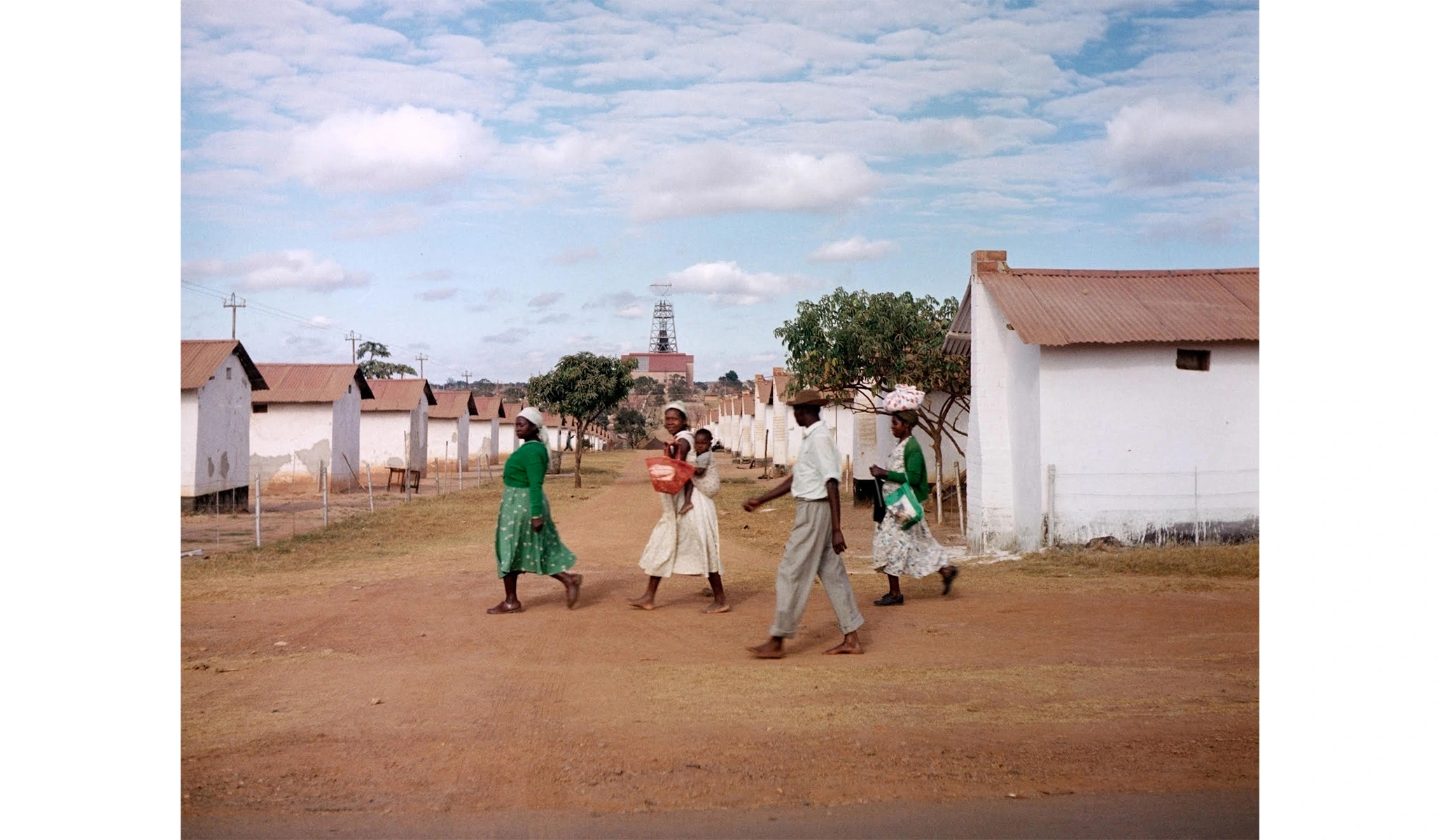“Outside the Frame: Todd Webb in Africa” is an impressive new exhibition at the Portland Museum of Art in Maine, which I had the opportunity to visit last month. Although my family and I visit Mount Desert Island every August for our vacation, it had been a while since I last visited Portland in 2019 when I wrote a story about the talented young artist Henri Paul Broyard. The drive from Vermont to Acadia is quite long, so reaching Portland requires some effort.
I have always had a fondness for Portland, with its vibrant art scene, excellent restaurants, charming atmosphere, and refreshing sea air. While the city has undergone significant redevelopment and now boasts upscale design boutiques, craft breweries, and even a Simon Pearce shop on Commercial Street, it has managed to maintain its authentic character. The influx of new residents, many of whom are professionals and affluent individuals, following the Covid-19 pandemic has only added to the city’s appeal. Every new Mainer and former New Yorker I met during my visit told me that their stress levels had significantly decreased.
The exhibition “Todd Webb in Africa” showcases a recently discovered collection of color photographs taken by Todd Webb (1905–2000) during his assignment for the United Nations in 1958. Webb was tasked with capturing everyday life in various parts of Africa, amidst the backdrop of independence movements sweeping the continent and the hope that Western-style economic development would bring prosperity and freedom.
Webb, mentored by influential photographers such as Berenice Abbott, Walker Evans, and Ansel Adams, had a notable career and even taught Georgia O’Keeffe the art of photography. Like the best documentary and street photographers, Webb had a unique ability to transport viewers into the moment, providing an honest and immersive experience.
Although Webb is best known for his New York street scenes from the late 1940s, his work faded into obscurity after he retired in the 1970s, only to be rediscovered within the past decade. His photographs from Africa offer a captivating glimpse into a hopeful era and a continent on the brink of change.
Webb spent five months in Africa, capturing images in Togoland, Ghana, Sudan, Somaliland, the Federation of Rhodesia, Tanzania, Zanzibar, and Kenya. This period coincided with the rapid collapse of the European colonial system, starting with India’s independence and followed by the independence movements in French West Africa and the British colonies.
The 1950s and 1960s were marked by optimism worldwide, a stark contrast to the current climate of finger-wagging, grudges, and anxiety. It is important to remember that the United Nations, in its early years, was seen as a force for progress and opportunity, rather than the bureaucratic institution it has become today.
I found the exhibition particularly compelling due to Webb’s photographs and the historical context they provide. While I appreciate the efforts of the curators, I must admit that I found their commentary, as presented in the catalogue and labels, somewhat frustrating. Visitors can still enjoy and learn from the exhibition without paying too much attention to the curators’ perspectives. Their focus on concepts such as colonialism, equity, and white privilege tends to overshadow the art itself.
The exhibition begins with a CIA map illustrating the political status of Africa in 1958, followed by Webb’s itinerary. It is interesting to note that Webb had never been to Africa before this assignment. The exhibition effectively combines Webb’s artistic vision with historical context, starting with his experiences in Togoland. Webb’s photographs exude a sense of style and upliftment rather than melancholy. As a natural optimist, I found this aspect particularly appealing.
As part of his assignment, Webb documented a parliamentary election in Togoland, capturing images of joyful men and women in vibrant local attire making their way to polling stations. One photograph that stood out to me depicted a group of men wearing white hats and frocks, seemingly enjoying an Election Day celebration. One of the hats bore the word “Ablode,” meaning “Freedom.” Another man sported a Santa Claus mask and saluted, suggesting that Christmas came twice a year in 1958. These scenes perfectly align with Webb’s sensibility.
Another favorite photograph of mine portrayed a stylishly dressed man in a tomato-red suit in Mogadishu, Somaliland. Nearby, two young women confidently walked towards Webb, both wearing identical yellow dresses. The composition, with bands of ocean, surf, clouds, and blue sky, was minimalist and visually satisfying. They reminded me of the supermodel Iman.
Webb also captured industrial scenes, which were the focus of the U.N.’s commission. His keen eye is evident in photographs of hydroelectric power stations in Tanganyika, characterized by shiny geometric shapes juxtaposed with neatly trimmed green grass. Another engaging photograph features a Texaco gas station with a smartly dressed attendant standing next to a pump, exuding sharpness and a friendly smile.
It is worth noting that the U.N. specifically requested photographs that showcased everyday life and people’s aspirations for a modern lifestyle through work and industry. Webb’s subjects were not sexualized or portrayed as primitive, as the U.N. wanted to emphasize progress and development. However, the curators seem to be fixated on narratives of colonial domination, power imbalances, and the perpetuation of misery and trauma.
Webb’s photographs encompass a wide range of subjects, including portraits, Modernist studies in form, and even comedic moments. For instance, a photograph of resting camels in Sudan has a touch of humor, with one camel appearing more ham-like than camel-like. His photographs of Mount Kilimanjaro, featuring sisal in the foreground, pay homage to Ansel Adams and evoke a picturesque and majestic quality reminiscent of Hudson River School paintings.
The exhibition also highlights the importance of teamwork in African societies. Webb captured images of riggers, miners, cargo handlers, and fishermen, showcasing the collaborative spirit of the people. He also documented local artists’ murals painted on buildings, as well as everyday scenes such as an outdoor tailor in Tanganyika measuring a woman with his trusty Singer sewing machine by his side. Other photographs depict individuals visiting clinics, police officers on duty, and men engaged in various forms of work. Together, these images portray a functioning society in line with the standards of the time.
The exhibition suggests that minerals such as sisal, copper, and oil held the potential to drive Africa towards a brighter future. However, the failure to achieve this was not solely due to white privilege, colonialism, trauma, or inequity, as contemporary buzzwords might suggest. Postcolonial leaders in countries like Zimbabwe, Togo, Sudan, and Somalia played a significant role in undermining their economies, democracies, and opportunities for their people. Ethnic enmities that predated the colonial era also contributed to these challenges. Today, Africa’s population is growing rapidly, and its people aspire to prosperity, affordable energy, and agricultural abundance. Real people often prioritize moving forward and leaving old grievances behind.
The exhibition also explores Webb’s use of color, which was not the default palette for photography in 1958. Color film and processing were expensive, and black-and-white photography was considered more serious. However, color was increasingly recognized as a medium that brought reality to life. Webb’s assignment for the U.N. aimed to showcase high-quality color photography. Aimee Bessire, one of the curators, discusses Webb’s use of color in a compelling catalogue essay. She highlights the racial bias in color film manufacturing, which neglected to consider the nuances of dark skin tones until the 1980s and 1990s. This oversight was brought to their attention by chocolate and furniture manufacturers who felt that color film did not accurately represent their products. Bessire’s point is thought-provoking and sheds light on the racial biases present in the history of photography.
While I appreciate Bessire’s perspective, I do not agree with her assertion that Webb’s color deficiencies diminish his portrayal of black subjects. For example, a photograph depicting patrons and waiters at an Accra hotel is deemed by Bessire as an illustration of racial inequity due to the depersonalization of the waiters through color. However, I found that the white patrons were no more defined than the waiters in the photograph. Webb’s focus seems to be primarily on the colors of the umbrellas, rather than perpetuating racial hierarchies.
Webb’s portraits of black subjects are often personal and stunningly beautiful. The sumptuously illustrated catalogue effectively showcases Webb’s and Africa’s vibrant palette.
In the 1970s, Webb’s place in art history seemed uncertain when he sold his entire archive to an art dealer who did little with it. This unfortunate situation is not uncommon in the art world, where valuable works can remain hidden. However, Betsy Hunt, a Portland art dealer who knew Webb, discovered the archive a few years ago. She realized that the new owners, three art investors, were not utilizing Webb’s work, which was stored in five trunks in a dry cellar. Hunt tracked down the investors and gained access to the archive, leading to a significant rediscovery of Webb’s art. This excavation of Webb’s archive is akin to the discovery of Vivian Maier’s photography archive, which contained a vast collection of negatives and prints.
Hunt, along with co-director Sam Walker, now oversees the Webb archive and promotes Webb’s work. In their exploration of the trunks, they uncovered a treasure trove of Webb’s art, including his post-war New York photographs and, in the third trunk they examined, the forgotten African negatives from 1958. These photographs, largely unknown until now, received limited exposure, with only 22 black-and-white images published by Webb’s U.N. superiors. Even in the late 1950s, the U.N. was already showing signs of bureaucratic shortcomings.
In 1955, Webb embarked on a cross-country journey across the United States, documenting everyday life, particularly in rural America. Although these photographs were never published, they will be featured in an upcoming exhibition on Webb and Robert Frank at the Museum of Fine Arts in Houston later this year. Webb’s work is finally receiving the recognition it deserves.

